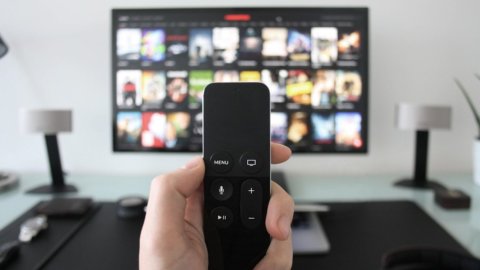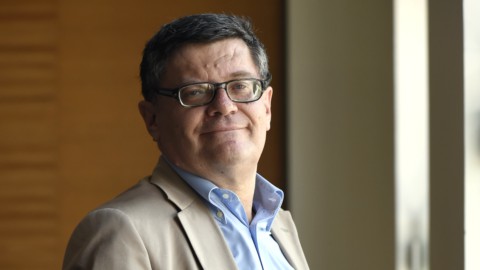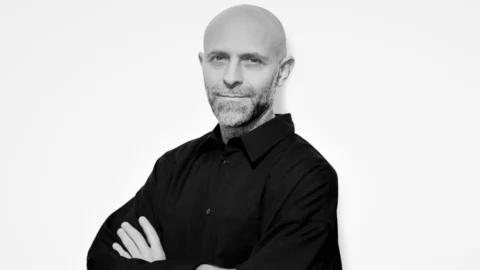The study conducted by R&S Mediobanca analyzes the dynamics of the main five Italian television operators through the analysis of the financial statements for the period 2012-2016, including the available updates relating to 2017.
The analysis also includes a comparison between the Rai Group and the main European public televisions.
An overview of the Italian radio and television sector (AGCOM data)
In 2016, the "television and radio" sector in Italy accounted for 0,5% of the national GDP. In 2016, the turnover was worth 9 billion euros and recorded a growth of +6,5% on 2015. Free-to-air TV generates the greatest revenues, or 5 billion euros (+9,8%), followed by Pay TV TV with 3,4 billion (+2,6%) and radio with 0,6 billion (+3,2%).
In our country, the market is highly concentrated, with the three main operators Mediaset, Rai and Sky jointly holding almost 90% of total national television revenues.
In particular, in 2016 over 80% of total free-to-air TV revenues were generated by Rai (49,9%) and Mediaset (32,8%). In pay TV, Sky is by far the leading operator with a 77,1% share, followed by Mediaset with 20,6%. Within the information system, the television medium confirms its centrality both for the number of users reached and for the income generated. Free-to-air TV reaches all television audiences, equal to about 25 million households, while pay-TV is accessible by just over a third of the Italian population (about 9 million households).
What is the scenario of the 5 main Italian television groups?
The aggregate revenues of the five main Italian television groups are recovering: including activities abroad, they amounted to 2016 billion in 9,5 (+6,8% on 2015). The figure is driven by the increase in the Rai license fee (+16,7%), advertising (+4,2%) and Pay TV (+2,8%). Discovery Italia grew the most (+22,1% on 2015).
Mediaset – the only Group with an international scope – in 2016 it achieved almost a third of its revenues abroad, above all in Spain. It is therefore first for total turnover with over 3,6 billion euros, while Rai has undermined Sky Italy placing itself in second place.
Considering instead only the national revenues, Rai it is the first operator in 2016. Estimates for 2017 forecast Sky Italia again in first position.
What happens on the front occupation? increase, albeit slightly, settling at 22.220 employees in 2016, with +0,7% on 2015, but down by 1,1% on 2012.
Moving on to accounts, the top 5 Italian television groups accumulated net losses of 2012 billion euros in the period 2016-1,3; only Discovery closed in profit with +23 million.
La industrial profitability is recovering for all operators: the top 3 for 2016 ebit margin is made up of Discovery (10,6%), Rai (3,8%) and Sky (2,4%). Of note is La7 which, despite having a negative EBIT margin (-15,7%), recovered 2012 percentage points compared to 34,1.
The financial structure has improved compared to 2012 and is on average solid, with equity representing 1,4 times financial debt. The most solid in 2016 are La7 and Discovery (without financial debt) and Mediaset (equity 1,7 times the debt). Sky strengthens its solidity in the five-year period, while the Rai Group is the most fragile. A clear downsizing can be seen in the investment chapter: the decreasing trend was confirmed in 2016 (-€99 million, or a third of the amounts in 2012); in the 5 years a total of €1,4 billion was invested. The company that has the best investment rate is Sky.
Public service: comparison with the main European countries
In Western Europe, the turnover of the television market in 2016 amounted to 99,4 billion euros (+1,8% on 2015) with pay TV (€45,1 billion in revenues and +2,5% compared to 2015) which has a greater weight, compared to Italy, on the total turnover (ITMedia Consulting data).
Among the major European public service groups, the British BBC stands out with a turnover of 5,8 billion and the German ARD with 5,6 billion: in 2016 they recorded about double the revenues of Rai (€2,8 billion ) and France Télévisions (€3 billion); last is the Spanish RTVE (€1 billion). Compared to 2015, Rai (+12,9%) and RTVE (+11,6%) grew the most, while ARD revenues decreased (-1,1%).
In terms of industrial profitability (ebit margin), Rai still stands out (3,8%), followed by ARD (2,3%) and France Télévisions (0,3%); negative margins, instead, for RTVE and BBC (both -0,4%).
On the balance sheet front, in 2016 RTVE and France Télévisions appear to be financially more solid, with financial debt at 8,2% and 31,2% of equity respectively. The BBC and Rai Groups, on the other hand, recorded financial debt higher than their own means (288,6% and 134,8%).
As regards investments, Rai makes less than half of France Télévisions and the BBC, but more than RTVE.
The Italian fee is the one with the lowest unit value and Rai is the public TV that boasts the primacy of audience ratings: in 2016 we paid 100 euros each, while Rai had 83 left; in 2017 we pay 90 euros and 74 remain with Rai. In France the fee is 136 euros, in the United Kingdom 169,9 euros and in Germany 215,8 euros.
The low Italian unit fee is partially offset by advertising, not present on the BBC and RTVE networks, and limited in quantity and time slots in France and Germany.
Audience quotas in Italy
Between 2012 and 2016, the audience gap between the top 5 Italian television groups narrowed, but the role of the two incumbent operators remains significant. In 2016, Rai and Mediaset were confirmed as the two main Groups, respectively with 36,7% and 31,6% of audience shares on an average day. Although spaced out, Sky, which reaches 7,9%, and Discovery, which reaches 6,7%, grow. We are therefore witnessing a redistribution of audience quotas from general interest channels towards thematic channels.





